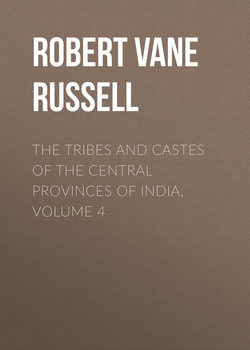Читать книгу The Tribes and Castes of the Central Provinces of India, Volume 4 - Robert Vane Russell - Страница 14
Part II
Articles on Castes and Tribes
Kumhār—Yemkala
Vol. IV
Kunbi
1. Distribution of the caste and origin of name
ОглавлениеKunbi—The great agricultural caste of the Marātha country. In the Central Provinces and Berār the Kunbis numbered nearly 1,400,000 persons in 1911; they belong to the Nāgpur, Chānda, Bhandāra, Wardha, Nimār and Betūl Districts of the Central Provinces. In Berār their strength was 800,000, or nearly a third of the total population. Here they form the principal cultivating class over the whole area except in the jungles of the north and south, but muster most strongly in the Buldāna District to the west, where in some tāluks nearly half the population belongs to the Kunbi caste. In the combined Province they are the most numerous caste except the Gonds. The name has various forms in Bombay, being Kunbi or Kulambi in the Deccan, Kulwādi in the south Konkan, Kanbi in Gujarāt, and Kulbi in Belgaum. In Sanskrit inscriptions it is given as Kutumbika (householder), and hence it has been derived from kutumba, a family. A chronicle of the eleventh century quoted by Forbes speaks of the Kutumbiks or cultivators of the grāms, or small villages.13 Another writer describing the early Rājpūt dynasties says:14 “The villagers were Koutombiks (householders) or husbandmen (Karshuks); the village headmen were Putkeels (patels).” Another suggested derivation is from a Dravidian root kul a husbandman or labourer; while that favoured by the caste and their neighbours is from kun, a root, or kan grain, and bi, seed; but this is too ingenious to be probable.
Group of Kunbis
13
Rāsmāla, i. p. 100.
14
Ibidem, p. 241.
